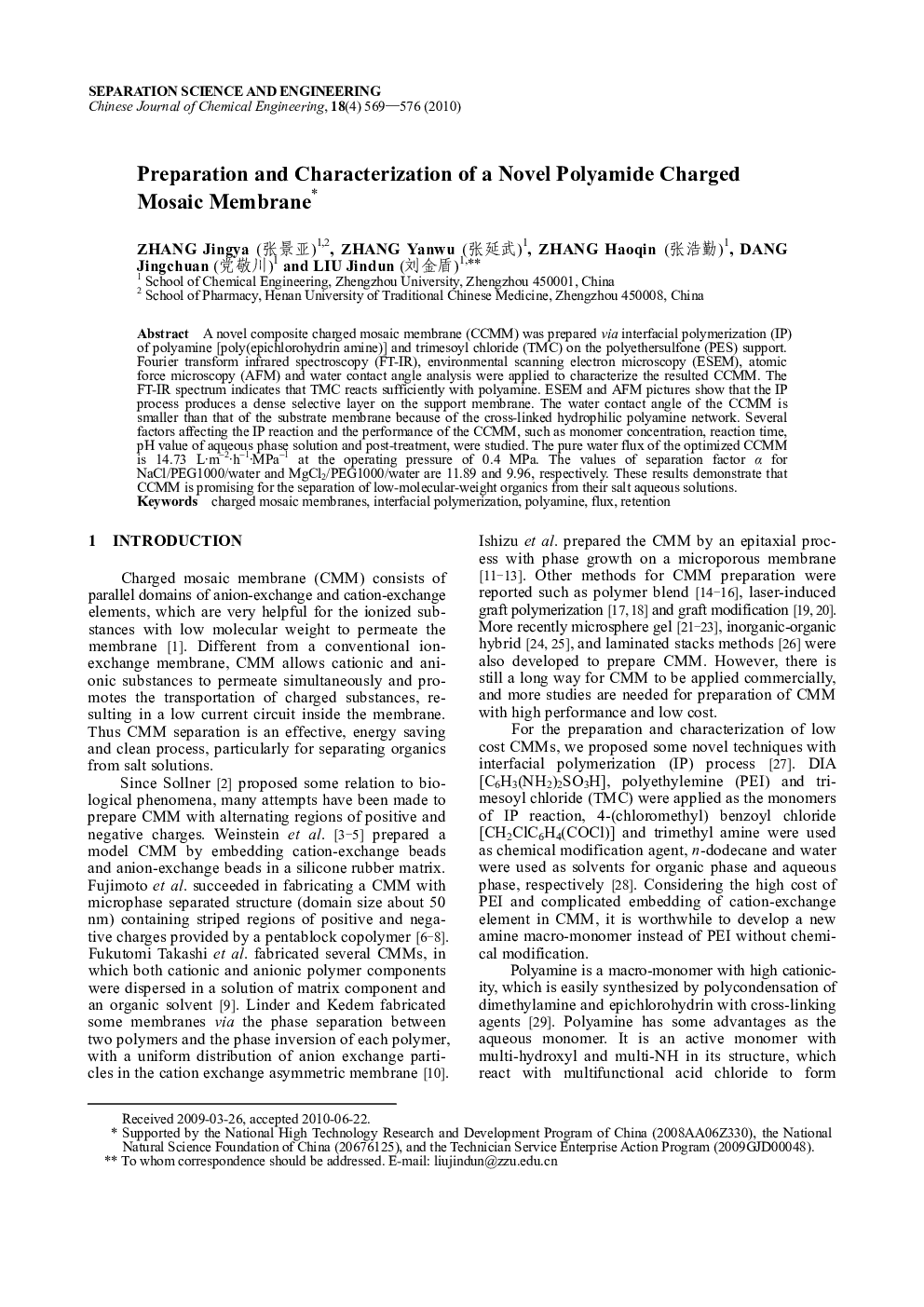| Article ID | Journal | Published Year | Pages | File Type |
|---|---|---|---|---|
| 166124 | Chinese Journal of Chemical Engineering | 2010 | 8 Pages |
A novel composite charged mosaic membrane (CCMM) was prepared via interfacial polymerization (IP) of polyamine [poly(epichlorohydrin amine)] and trimesoyl chloride (TMC) on the polyethersulfone (PES) support. Fourier transform infrared spectroscopy (FT-IR), environmental scanning electron microscopy (ESEM), atomic force microscopy (AFM) and water contact angle analysis were applied to characterize the resulted CCMM. The FT-IR spectrum indicates that TMC reacts sufficiently with polyamine. ESEM and AFM pictures show that the IP process produces a dense selective layer on the support membrane. The water contact angle of the CCMM is smaller than that of the substrate membrane because of the cross-linked hydrophilic polyamine network. Several factors affecting the IP reaction and the performance of the CCMM, such as monomer concentration, reaction time, pH value of aqueous phase solution and post-treatment, were studied. The pure water flux of the optimized CCMM is 14.73 L·m−2·h−1·MPa−1 at the operating pressure of 0.4 MPa. The values of separation factor a for NaCl/PEG1000/water and MgCl2/PEG1000/water are 11.89 and 9.96, respectively. These results demonstrate that CCMM is promising for the separation of low-molecular-weight organics from their salt aqueous solutions.
